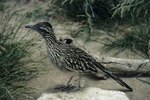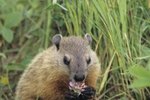
The southern flying squirrel -- so dubbed because it is found primarily south of its colder-climate counterpart, the northern flying squirrel -- is found in the eastern United States down into Mexico. Known for its ability to leap great distances between trees, the flying squirrels have lifespans in the wild that are about half what they are in captivity.
What is a Flying Squirrel?
Flying squirrels don't really fly; they glide from a high elevation in one tree to a lower elevation in another. This is often a defense mechanism as the squirrels try to escape predators by gliding to densely packed lower branches. They have flaps of skin that run from their front legs to their back legs that, when extended, catch the wind to slow their descents. Most glide up to 30 feet from one tree to another, but flying squirrels have been known to glide as far as 270 feet from high elevations.
Wild Lifespan
Southern flying squirrels tend to reach their sexual maturity before they're a year old, so they can reproduce several times within short lives. This is a handy trait, considering most southern flying squirrels only live to age 5 or 6 in the wild. These critters are the smallest species of flying squirrel, topping out at about 9 inches long, while their northern counterparts are around 12 inches long. The southern variety is less picky than other squirrels, leading omnivorous lives. They scrounge for acorns and other nuts, but they'll also scavenge from the kills of other animals and crack open bird eggs for a meal. Although this gives them a bit of an evolutionary edge, they have many predators that keep their lives short.
Predators
Predators are the key reason southern flying squirrels don't live as long as their potential allows. They come out mostly at night to use the cover of darkness as protection, but it only opens the door for nocturnal predators. Owls in particular are fond of southern flying squirrels and are skilled hunters. Other predators include foxes, bobcats, skunks and weasels. Flying squirrels have also been found in the bellies of rattlesnakes, which thrive in warm southern climates.
In Captivity
When raised in captivity without the worry of predators, southern flying squirrels can live 12 or 13 years. Southern flying squirrels can be kept as pets, although they need plenty of room to move around their cages. They also enjoy natural elements, such as branches, on which to play, and they need a hammock or similar area to sleep and make a nest. They don't hibernate like some squirrel species; they tend to huddle together in groups when it's cold. If you have only one of them, make sure to keep the room warm so the squirrel stays comfortable, and provide strips of rags, leaves, straw and other materials so he can build a nest.
References
Photo Credits
-
Jupiterimages/Photos.com/Getty Images




